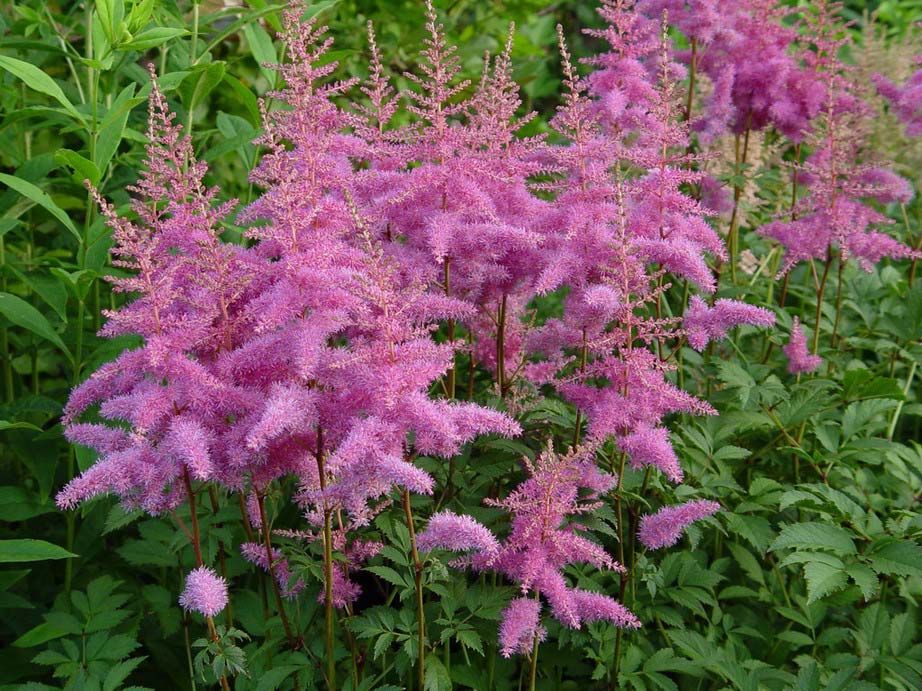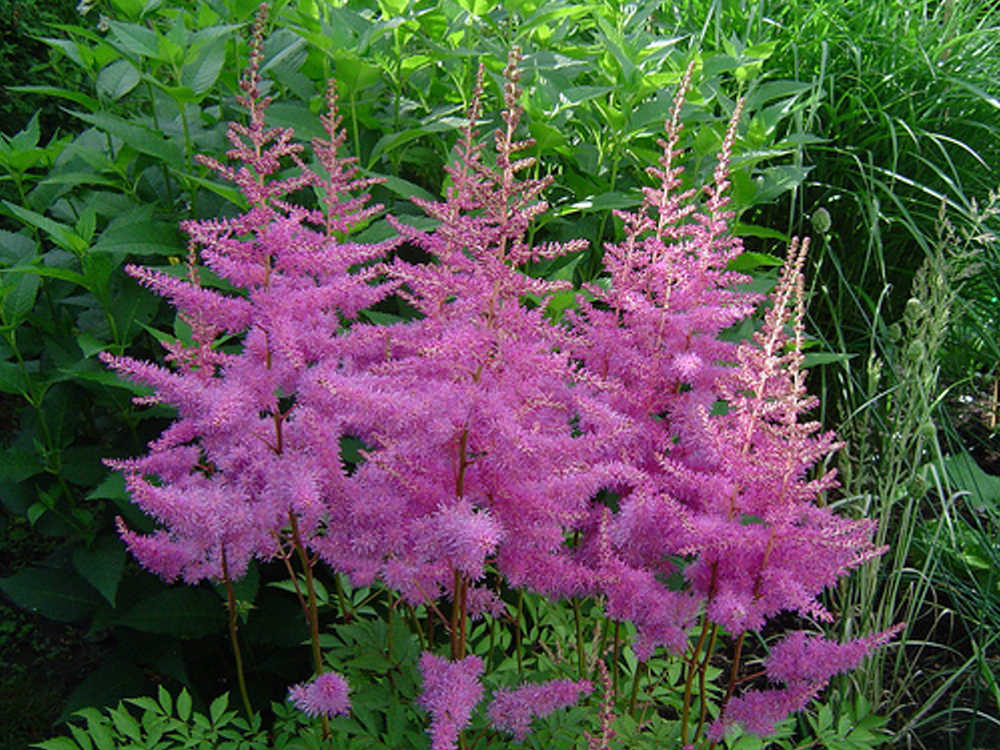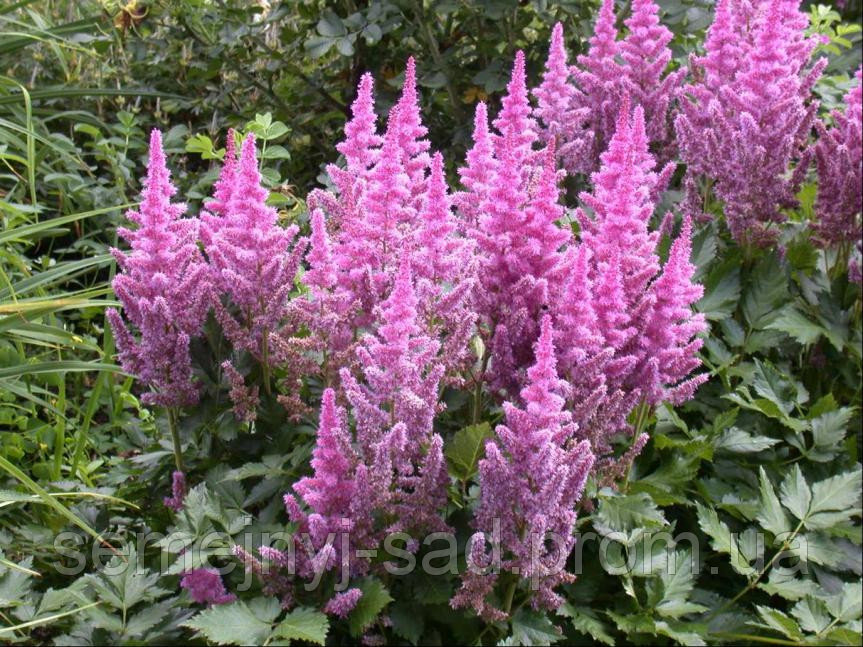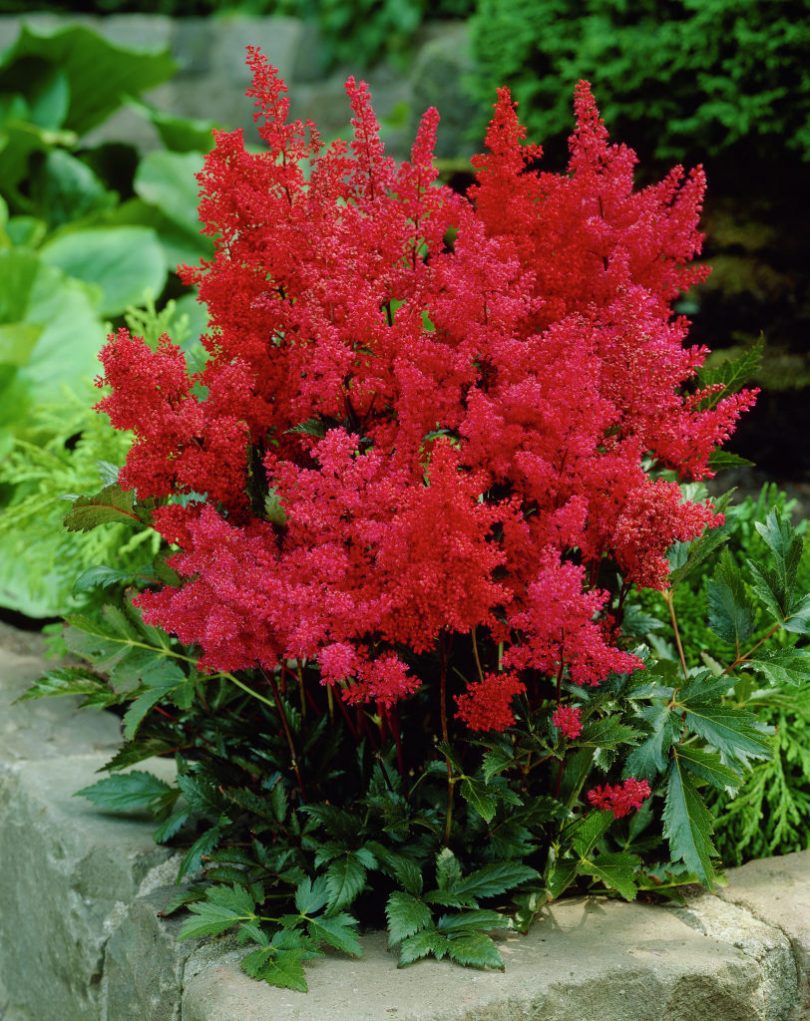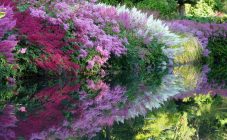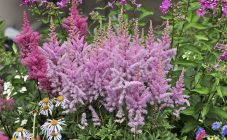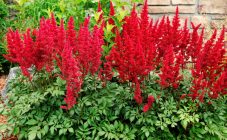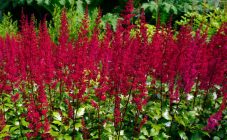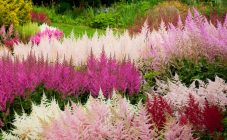Content:
Blooming astilbe Amethyst is associated with a light colored cloud with a delicate honey scent floating weightlessly over the green foliage of neighboring plants. It has fluffy flowers of light lilac shades, consonant with the color scheme of a true amethyst - a noble gem.
Astilba Arends
According to its botanical properties, the plant is a representative of the class of herbaceous crops and belongs to the saxifrage family. Currently, the composition of this flower culture unites up to 40 varieties with different external characteristics. In their natural state, plants grow in the humid regions of East Asia and in the north of the American continent. Most often, representatives of the astilbe species are found in mountain forests, on the banks of mountain streams and in river valleys.
For the first time a description of the flower culture was made in the middle of the 19th century. During a biological expedition to uncharted regions of China, organized to search for unexplored species of flora, the famous Scottish traveler Lord Hamilton drew attention to a flowering plant of an unusual species. Due to the high decorativeness of the inflorescences and the glossy surface of the leaf cover, the plant was given the name "astilba", which in Greek means "without shine".
The sample of the flower was brought to Europe, where it was used as an ornamental plant used to decorate bouquets. Gradually, interest in this culture began to fade, and only after the famous botanist from France, Mr. E. Le Mua, began to engage in the selection of new varieties, a new round of popularity of the culture began.
Subsequently, the German scientist - botanist G. Arende, was so impressed by the indescribable beauty of this plant that he began to actively engage in its selection and develop new varieties. As a result of many years of painstaking selection work, more than 80 new wonderful varieties of culture have appeared, named after his name. Among all this group, Astilba Arends Amethyst stands in a special place - a real flower jewel with bright inflorescences of pink-red hues.
Botanical characteristic
Astilba amethyst decorates any garden or flower garden. For its unusual beauty and airiness, many lovers of this flower call the plant a real aristocrat. The main advantages of Astilba Amethyst and a description of the plant:
- Perennial plant of bush type.
- The height of an adult plant is between 80 and 100 cm.
- The leaves are trifoliate, compound, yellow-green, matte.
- Paniculate inflorescences ranging in size from 17 to 30 cm are painted in bright lilac or violet-pink shades.
- Sepals of inflorescences of a light shade with a pink frame.
- Long-lasting flowering for 25-30 days from July to late summer.
- The fruit is a seed capsule with small seeds ripening by the end of August or the beginning of September.
- The plant is resistant to viral diseases and is practically not affected by pests.
- Good winter hardiness.
In addition to the excellent decorative characteristics and unpretentiousness of the culture, it should be noted the ability of the plant to thrive in shaded areas. Light partial shade and diffused lighting contribute to lush flowering and have a good effect on the overall decorative effect of the entire bush.It is for the shade tolerance of Arends astilbe (arendsii feuer) that growers awarded her the title of "Queen of the Shadow".
Interesting. Astilba Arends astilbe x arendsii feuer in the form of a luxurious bush with carved leaves and long paniculate inflorescences of a lilac or purple amethyst shade is considered the most suitable plant for decorating a shady part of a garden or cottage.
Growing a plant
Blooming Astilba Arends fascinates at first sight. The beauty of this flower bewitches and magically illuminates the most inconspicuous corner of the garden or cottage with its amethyst shimmer. Seeing this magnificent plant, every florist dreams of growing such beauty in his flower garden. Therefore, it is important to familiarize yourself with the basic rules of planting and caring for a plant.
When choosing a propagation method, it should be borne in mind that astilba amethyst is a hybrid plant. Therefore, even if it is possible to collect its seeds, there is no guarantee that the seed-grown flower will repeat the original beauty of the mother plant. Therefore, the main breeding method is dividing the bush.
You can divide the bushes in spring and autumn. The rhizome of young plants can be divided by hand; a shovel or a garden knife is used to divide bushes with a powerful root system. If a shovel is used for separation, then you can not dig up the bush completely and separate part of the rhizome directly in the ground. The place of division is covered with earth, the soil is compacted and abundantly watered with water.
Dividing a flower with a garden knife requires digging up the bush. It is recommended to examine the rhizome of the dug out bush and remove the dead parts of the root. After this procedure, the bush must be divided into several equal parts so that the rhizome and adventitious roots, as well as buds, remain on each new separated copy. The peculiarity of breeding astilba is its rapid growth. If it is necessary to get as many new plants as possible from one bush, then it is quite acceptable if the new division will consist of one root and a bud. Thus, you can get from 10 to 20 pieces from one mother plant. new divisions. The only disadvantage of this division is the slow flowering in the first year after planting.
In order for a blooming culture to please with its flowering, it is recommended that you familiarize yourself with the basic agrotechnical methods of growing:
- Placing the plant on fertile soil contributes to the maximum decorative effect. Therefore, it is recommended to prepare the planting hole in advance and enrich the earthen mixture with humus and complex mineral fertilizer.
- Before planting, the well is watered abundantly with water and after complete absorption of moisture, a new bush is planted in the soil.
- After planting, the earthen mixture near the plant is compacted and watered again. The second watering is required and promotes rapid rooting, as this removes possible air cavities around the rhizome.
- Autumn planting should end no later than mid-September. If the grower already at the end of autumn got the coveted bush of amethyst astilba, then in this case the plant should simply be dug into the ground to preserve it until next spring.
Advantages and disadvantages of the variety
Among all the varieties of astilbe flowers, the Amethyst variety stands out for its extraordinary colors with smooth transitions from lilac to purple. A blooming bush, the word weightless airy haze soars over green neighboring plants, attracting attention with its unusual appearance.
Amethyst-colored astilba is such a perfect plant that it is difficult to find any flaws in it. The only thing I want to note is that this flower culture, in comparison with other varieties, prefers shady places in the garden. In direct sunlight, the inflorescences lose their decorative effect and begin to crumble. The second drawback is associated with the need for constant soil moisture. But such requirements are consonant for all varieties of astilbe colors.
The beautiful plant Astilbe Arends astilbe x arendsii feuer is considered to be the ideal herbaceous plant recommended for outdoor use. A flowering bush with delicate and refined flashes of amethyst hue disposes to relaxation and brings a lyrical romantic mood.
